Queen Amidala, Pigeons, and Brain Teasers: Sights of Ulaanbaatar, Mongolia
Posted: November 2nd, 2013 | Author: ctbideas | Filed under: ATW Updates | 2 Comments »Mongolia was designated as our rest country, so we spend many days staying indoors, only leaving for meals and sleeping a great deal. When we did go out for touristy things, we kept our visits short, usually visiting one site each time. Here are a few of those sights:
Sukbaatar Square
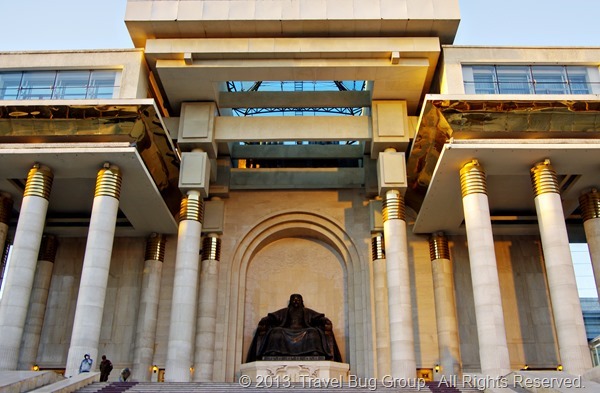
This is the main square along Peace Avenue, a gathering place right in front of the main government house. At one point, we stumbled upon a huge sports gathering, culminating in four shirtless men flailing their bodies (dancing?) to the cheers of a large crowd of people. The main thing of note here is the giant Chinggis Khan (the real way to spell Genghis Khan’s name) statue flanked by two horseman, both different in face and body.
Mongolian National Museum (5,000 MNT admission, 10,000 MNT photo fee)
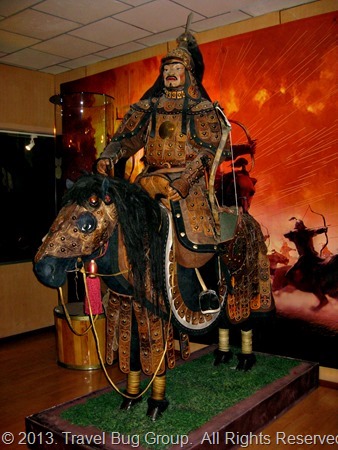
This museum was Rick’s pick because it advertised a room full of Mongolian armor. It’s a history museum detailing Mongolian history from the prehistoric times to the most recent democratic era. Rick was so fascinated, we shelled out for the photo fee. A photo fee is a fee you pay in order to be able to take photos of the inside of the museum. As you can tell, it’s quite a bit higher than the actual price of admission. It’s always advisable to check out the museum first to see if it’s worth the photo fee (especially since there are still whole sections in this museum that we couldn’t take pictures of even AFTER paying the photo fee).
As promised, there was a whole display of Mongolian armor complete with a life-size model of a fully-decked out warrior and his trusty horse (as pictured). There is also a whole room full of historical and traditional Mongolian fashion, of particular fascination to me. It’s where we discovered that Queen Amidala (of the less-acclaimed Star Wars trilogy) is completely fashioned after traditional Mongolian women formalwear. At the time we visited, they were renovating a few rooms worth, so we didn’t get to see the Soviet-era history. But, a good place to visit overall, to get a complete, if general, sense of Mongolian history.
International Intellectual Museum (3,000 MNT admission, no pictures allowed except at one specific place)
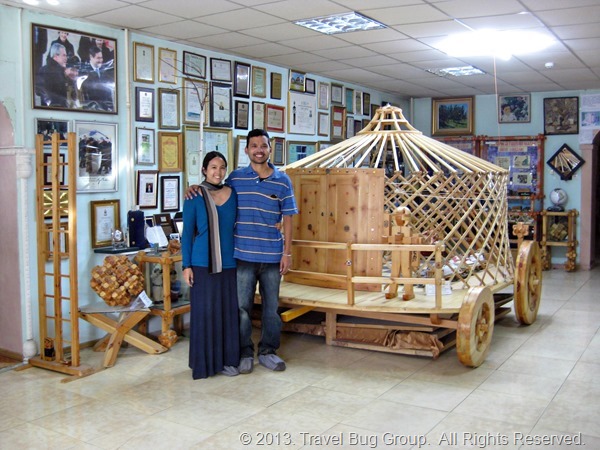
This museum was my pick, because, well, how often do you hear of the word "Intellectual" in the name of a museum? It was super hard finding this museum, even with it clearly marked on our tourist map (received from the guesthouse we were staying at). We walked until we stood in front of the place it was supposed to be, only to be faced with an abandoned building standing next to a construction site. I turned to Rick and said, "I hope they didn’t just tear down the museum." Finally, after wandering around, we discovered a door next to a large Lion King mural with a small banner written in Mongolian atop it adorned with pictures of wooden brain teasers. This was it! Except, the door was locked, and next to it, a piece of paper was tacked to the wall written only in Mongolian. I was completely crestfallen. Grasping at straws, I said, "Maybe they moved? Because of the construction?" Rick, always indulgent of my whims, and I wandered around for another fifteen minutes hoping to spot some sort of sign. Nothing. I decided to go back to the door and take a picture of the sign so that our host at the guesthouse could translate it for us. But, when we arrived, the door was open. I poked my head inside the hallway and opened the first door on the left. "Museum?" I asked the woman inside. She pointed back out the door, arching her hand to the left. We went back out. Surely, it couldn’t be IN the construction site. That seemed rather dangerous for tourists. Rick, knowing I was close to tears of frustration, approached a construction worker, "Museum?" The man pointed to the left. We hovered, uncertain where to go. Then, I spotted an unmarked red door. We had found the museum!
The museum is quite remarkable once you find it. It’s a whole museum on the different games Mongolians play, focusing on brain teasers created by the founder of the museum, who started inventing these puzzles at the age of 10. When entering, we were given slip-on cloth covers over our shoes and directed to place our bags on shelves. Then, the tour guide, with remarkably good English, took us to each room, each section depicting a different type of game (brain teasers, chess, shadow puppets, cat’s cradle, sheepbone games, etc.) Even the furniture created to display the collection are brain teasers. Sometimes, our tour guide offered a brain teaser for us to solve within a short time, with a cash prize (in US dollars) if we succeed. We didn’t. It made me feel very dumb, fascinated but dumb. There was a whole nook dedicated to chess sets, not only chess sets from Mongolia, but collected from all around the world. Another room consisted of a motley mish-mash of toys from all over, some of which I had grown up with and had fond memories of. It’s truly amazing how much success one man with a singular passion and obsession can achieve, even if it’s something unique like puzzles. We left with a puzzle box and a new appreciation of brain teasers.
The Fine Arts Zanabazar Museum (5,000 MNT admission, 15,000 MNT photo fee)
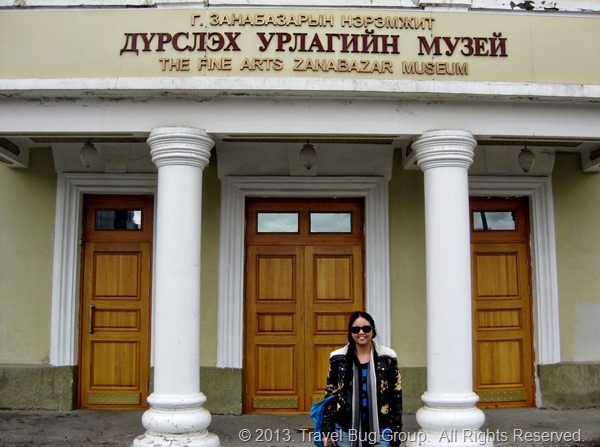
For the longest time, I called this museum the "Zanzabar Museum" which always led Rick to break out into Tenacious D’s extremely inappropriate but hilarious "F**k Her Gently" song. It’s an art museum focusing on this monk, Zanbazar, and Buddhist art. We went during a weekday, so I don’t think they were expecting many visitors. As we wandered through each room, an elderly lady ran ahead of us, switching on the lights for the next room and turning off the lights from the room we just left. I suppose it’s a way to save electricity but it was quite funny when she miscalculated once and we ended up in the dark briefly.
The art is gorgeous, with remarkable detail. And they display the different forms the art can take, such as tapestries and models and different painting techniques, so that was very interesting to examine. There are descriptions in both Mongolian and English.
We weren’t willing to shell out the high photo fee, so there aren’t any actual pictures from inside it, but it’s definitely worth checking out even if just for the artistic inspiration. There’s a FANTASTIC Ukrainian restaurant across the street, worth trying if you can find it. Especially the borscht.
Narantuul Market (aka. The Black Market, free admission)
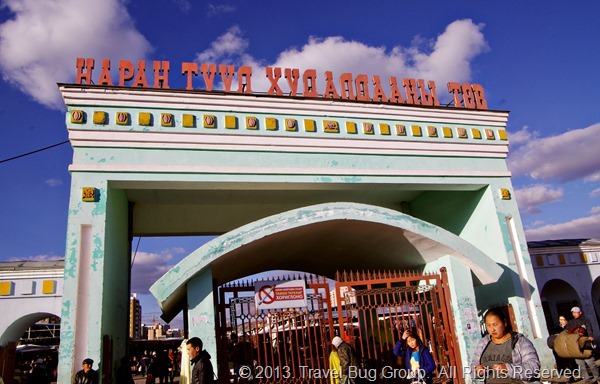
Narantuul Market was originally named the Black Market because it was, indeed, a market for illicit goods and stolen antiquities. Now, it’s a market for everything except illegal items. It still gives off the vibe of a forbidden sort of market, though, with people selling items out of the trunks of their cars or out of shipping containers.

Dogs run in and around stacks of merchandise, or salivate near open carts full of meat for sale. I hear it’s pickpocketer’s heaven, so keep a tight watch on your belongings. We didn’t find anything of interest to buy, but it’s fun people-watching nevertheless.
Mejid Janraysig Temple
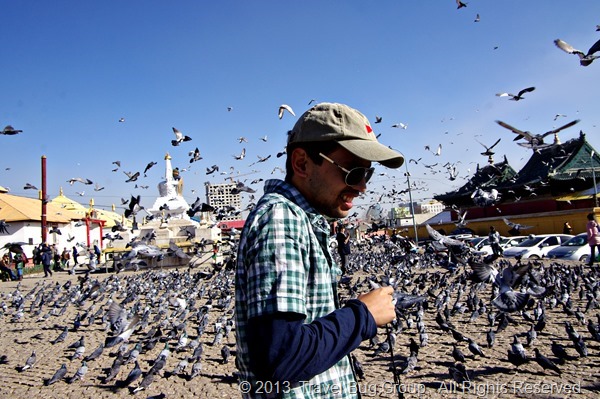
The main thing of note here for us is the sheer amount of pigeons everywhere. We didn’t want to pay the admission fee to enter the actual temple, so mostly just walked around enjoying the ambience and trying not to get pooped on by the thousands of pigeons flying around.
-Ma and Thea drive down to San Juan Capistrano.
Thea: “Ma, let’s go inside the mission.”
Ma: “Nooooo, I dun tink so, Tee-uh.”
Thea: “What?! We drove all the way down here to go inside the mission, and now you don’t want to go in?!”
Ma: “Noooooo, I am just pine out heeeere.”
Looooove it.
Thanks for the updates! Don’t worry, you guys are still the smartest people I know. Narantuul Market sounds just like El Rastro in Madrid, the place to go to buy your car stereo back!
LOL! I totally remember that =)